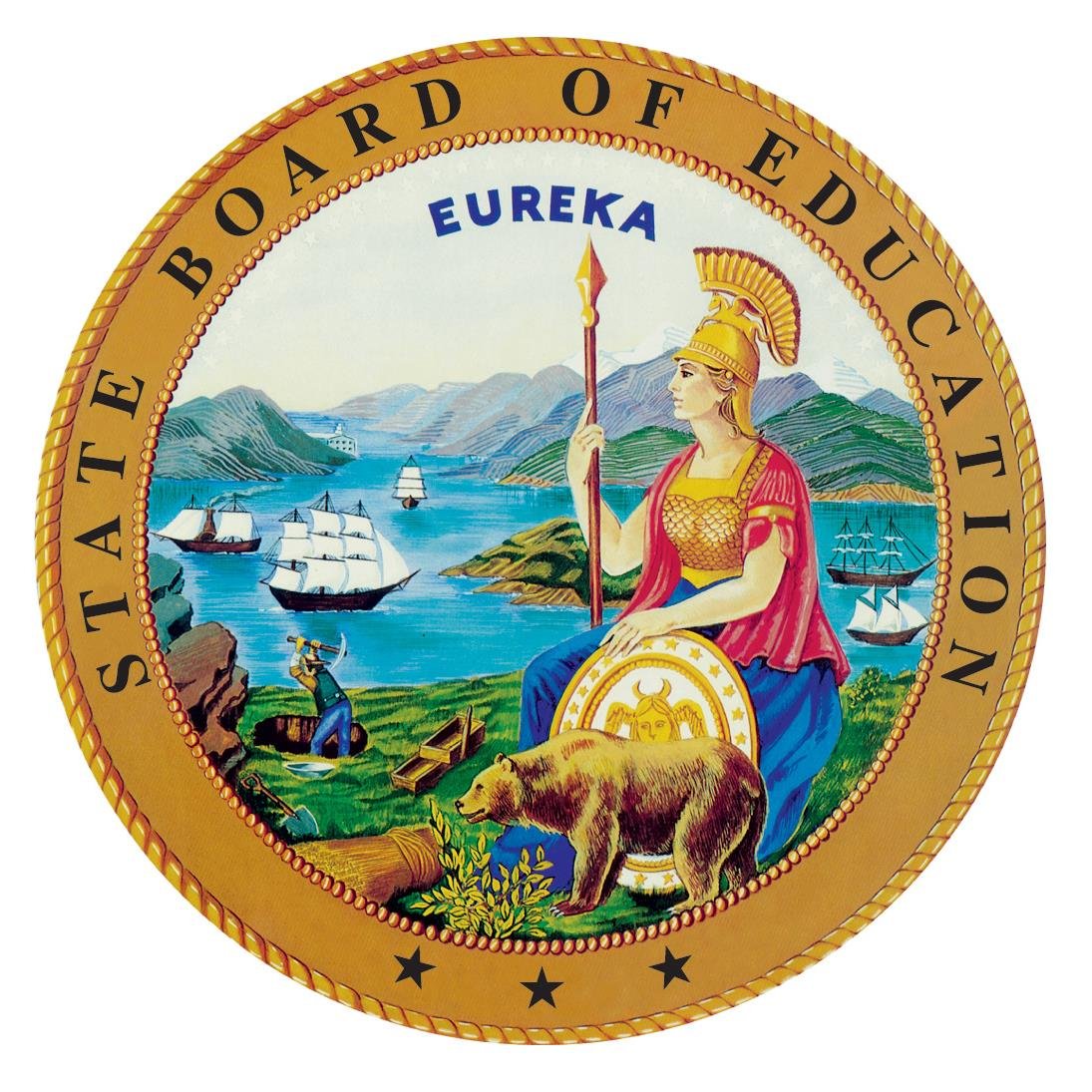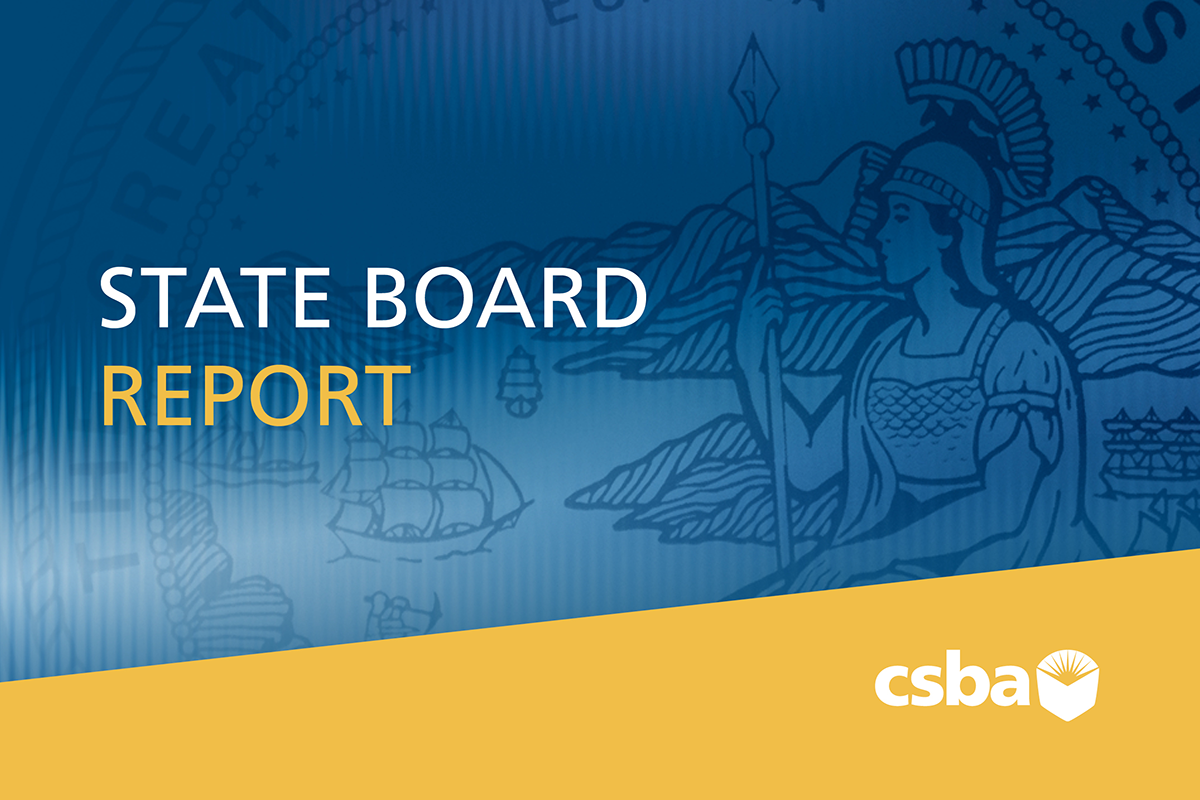To frame the meeting agenda, State Superintendent of Public Instruction Tony Thurmond and State Board President Linda Darling-Hammond outlined some of the realities facing LEAs and previewed what the next school year may bring. From the 400,000-plus students who need a device at home to connect with distance learning to concerns about the exacerbation of longstanding achievement gaps, Thurmond overviewed the California Department of Education’s array of task forces to address critical issues.
Of particular interest as the 2019–20 school year winds down is a group focusing on health and safety, social distancing and personal protective equipment — all which will play a role in the 2020–21 academic year.
“We are actively working hard on answering the question on how can our schools reopen safely when the time is right and when there’s an ‘all-clear’ for schools to do so,” Thurmond said.
As the state cautiously moves forward in reopening its sectors, Darling-Hammond said it is “potentially possible” for some districts — which are ready to do so and receive clearance from county health officials — to see students return for summer school or to start next school year earlier. “These decisions will all be made through the lens of public health and local input, as that is the prime consideration,” she said.
“Before that happens, guidance, as the superintendent mentioned, will be issued about how to maintain health and safety in schools, (guidance) will be prepared for the possibility that we may have to open a school and then close it again and then reopen it again,” Darling-Hammond added. “And we’ll need to be prepared for blended learning models for a more seamless transition that ensures the prospects for learning even if the places for learning are variable.”
Despite the challenges and uncertainty facing schools, Darling-Hammond said she has been heartened to see so many parts of the education system come together to serve students. “They say that necessity is the mother of invention, and we have seen that in many, many ways over these last few weeks,” she said, acknowledging Teacher Appreciation Week. “And so many creative and innovative ideas have surfaced as we have been shifting through distance learning.”
Incorporating federal waivers; proposed workload for Dashboard, accountability
While the U.S. Department of Education approved two critical waivers for California schools — one waiving assessment and accountability requirements and the other allowing for federal funding flexibility — in the last two months, the actions were not final until the State Board ratified the waivers on Thursday.
While the board members unanimously approved both waivers, several cautioned that the state be careful to not let the current situation dictate a divergence from efforts and initiatives created to address long-standing achievement and equity concerns. “I absolutely support the practical need for flexibility at this point in time. And we are working through these challenges,” board member Ting L. Sun said. “I want to ensure that we move forward with integrity on what we had initially launched our accountability system, our assessment system on.”
“I think for all of our stakeholders who are watching this closely, as is appropriate, know that COVID-19 didn’t create all of these inequities and inequalities that kids are facing. It has only made it just obvious how precarious so many of our learning situations have been across the state,” board member Kim Pattillo-Brownson added.
Despite the federal waiver allowing California to forgo assessments this year, state law requiring the annual production of the California School Dashboard and the identification of LEAs for differentiated assistance remains in effect. As first presented in an April 21 webinar, CDE officials updated State Board members on their progress to work with the Legislature to cancel the 2020 Dashboard. Cindy Kazanis, director of the Analysis, Measurement and Accountability Reporting Division, outlined how that would affect the key cog in the state’s accountability and assessment system. Many of these assessment and accountability changes are outlined in a newly posted frequently asked questions page related to COVID-19.
Absent complete assessment data for the 2019–20 school year, Kazanis said the plan is that the 2021 Dashboard will use 2021 data to calculate status and 2019 data to calculate change; the calculation for change would be 2021 status minus 2019 status.
Also in her presentation on the Dashboard workplan, Kazanis said the CDE is still collecting data from LEAs on discipline, absences and graduation rates. The window for end-of-year collection begins next week and runs through Aug. 28. This data, along with any applicable local indicators, can play a key role in the delayed Local Accountability and Control Plan timeline, she said. “The LCAP process has been moved to the fall so community engagements can occur, people can take stock of where they are and make plans,” Kazanis said. “And the three-year planning cycle will shift to 2021 to 2024 so we can take into account the new realities that have occurred.”
Kazanis also emphasized that the CDE is still committed to bringing forward a much-anticipated student growth model for State Board adoption this fall. A work group for the growth model, which CSBA participates in, will resume its meetings this summer.
Rolling out a new tool website for teachers
During an assessment item in which the board approved the proposed Alternate English Language Proficiency Assessments test blueprint, CDE staff also provided a demo of a new teacher resource website available through the Smarter Balanced Consortium. The CDE is decommissioning the existing Digital Library on May 28 and planning a grand rollout for Tools for Teachers for September.
Though developed well before COVID-19 and school closures, board members expressed great interest in how the CDE could tailor the resource’s launch to focus on pressing issues such as distance learning and learning loss. Board member Patricia Rucker implored the CDE to work with LEAs to ensure that all teachers know they will have free access to the website, while member Sue Burr asked that resources are targeted toward the new realities facing schools.
“I would like some assurance that — and I know a lot of people are talking about this already — these tools for teachers really are going to be incredibly helpful in a new model, and not a classroom-only model, a one-to-one student-teacher model, but what’s going to be a hybrid model as we move forward.”
“I think that’s going to be happening with a lot of tools and a lot of resources as we evolve with this new set of new normals over the coming year,” Darling-Hammond said.
In other State Board news:
- The CDE reported it will bring new College/Career Indicator measures to the board for consideration in September 2020. Possible measures are: Pre-Apprenticeship Program Completion; State or Federal Job Program Completion; Transition Program: Classroom-Based Learning Experiences; and Transition Program: Work-Based Learning Experiences.
- The State Board cancelled the 2020 Health Instructional Materials Adoption due to a lack of publisher participation. Responding to concerns from several callers during public comment that the state is leaving behind the highly debated framework, CDE staff said the State Board can adopt textbooks in the future if there is publisher interest. Further, the CDE is developing an instructional materials website as part of the statewide Health Education Curriculum Framework’s rollout. “Just so people understand, it’s not walking away from the question of providing guidance on instructional resources,” Darling-Hammond said.
- Due to delays caused by COVID-19’s impact on meetings, the board approved the revised timeline for the 2021 Revision of the Mathematics Framework for California Public Schools, Kindergarten Through Grade Twelve. The new timeline moves the State Board’s final action on the framework from spring 2021 to November 2021.
- Sixteen school districts were granted waivers allowing them to forgo a required districtwide election to establish a by-trustee area, rather than at-large, method of election. The State Board approved the waivers so that the districts can reduce the potential for litigation under the California Voting Rights Act and establish by-trustee area elections as soon as possible. The districts may now adopt the method upon review and approval of the appropriate county committee.
The next State Board of Education meeting is scheduled for July 8–9, 2020. View the full meeting calendar.





